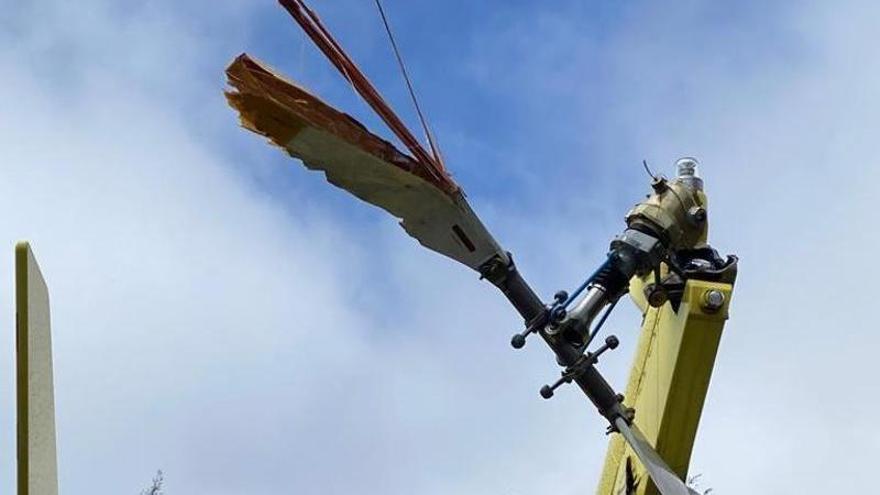
The strong wind, together with the actions of the commander, caused the accident of the medicalized helicopter of the Canary Islands Emergency Service (SUC) that collided with the tail rotor against a tree on the helipad of Tenerife Sur airport in March 2022 without causing injuries. The conclusions of the report of the Air Accidents and Incidents Investigation Commission (Ciaiac) indicate that “the crew underestimated the influence of the strong wind in the positioning maneuver”, an action that was “aggravated by the assumption of flight controls by the commander” when the co-pilot was preparing to put him down on the ground.
The accident occurred around noon on Monday, March 28, after the aircraft made a transfer of a patient from El Hierro to the Nuestra Señora de la Candelaria University Hospital in Santa Cruz de Tenerife. When they returned to their base at the airport in the south of Tenerife with two toilets as passengers, the crew spoke of the intensity of the winds, with gusts of between 103 and 112 kilometers per hour at an altitude of 1,500 meters.
“Although we have a lot of wind, I am in favor of leaving the helicopter as usual, for safety; we will see how it is there and evaluate it, but it is preferable; it is that if not the tail is there very outside. Let’s see if the trees cover a bit of the wind”, the commander told the co-pilot, who at that moment was in control of the aircraft. When he says “as always” he means facing the building where Babcock, the service concessionaire, is based.
The helicopter arrived safely in Tenerife South and carried out its own filming, which, unlike planes, is still practiced while flying. At the time of landing, the co-pilot indicated that he was doing well, “although it fights a little with the wind”, says the Ciaiac report. The commander orders him to expedite the maneuver, until a moment comes when in the recordings he is heard exclaiming: “Be careful! careful!”; and then: “Mine, mine”.
The highest authority within the aircraft decided to take the controls when a vibration occurred shortly after. Half a minute later, one of the toilets warns that the helicopter “is throwing liquid from behind”. And seconds later, someone from the outside warns them that they have hit a tree. “what tree? What have we hit the tree? With the tail rotor?”asks the commander.
The helicopter had ascended about five meters and had touched the rear of the specimens that sheltered the helipad when it tried to leave the aircraft facing the building, although it finally ended up in the position totally opposite to that intended by the crew. The Ciaiac points out that the commander was “quick” to put down the aircraft after the crash and before it became destabilized due to the significant damage it had suffered to the tail rotor and vertical stabilizer.
The conclusions of the report suggest that the accident occurred because “the crew underestimated the influence of the strong wind on the helicopter positioning maneuver on the parking platform”, which was “aggravated by the assumption of the flight controls by the commander with little awareness of the instability of the helicopter”. “This caused”, he continues, “that the obstacle protection zone on the K3 helipad was exceeded in the maneuver and the tail of the helicopter hit a tree.”
















